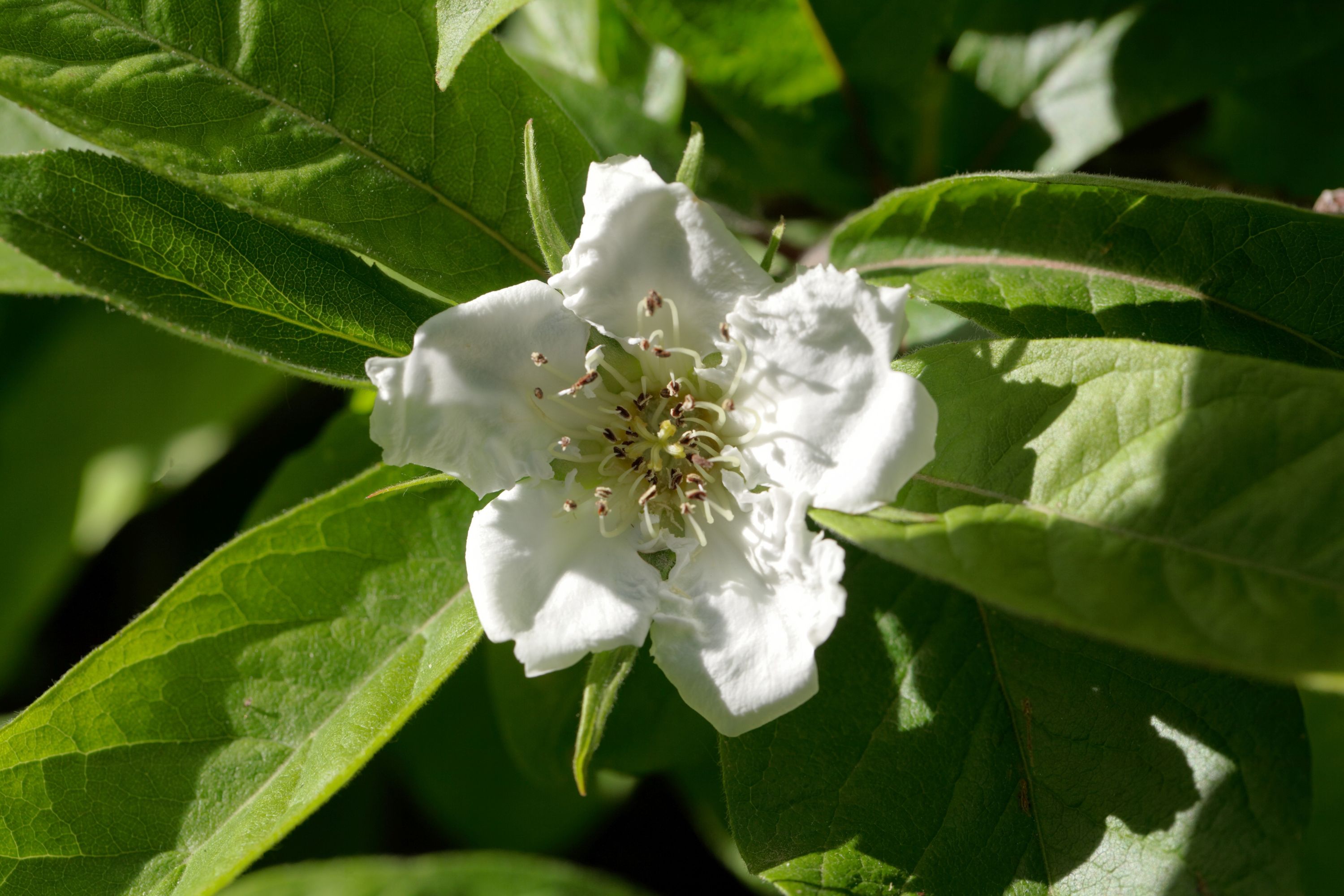Medlar
(Mespilus germanica)

Description
Mespilus germanica, known as the medlar or common medlar, is a large shrub or small tree in the rose family Rosaceae. The fruit of this tree, also called medlar, has been cultivated since Roman times, and is unusual in being available in winter, and in being eaten when bletted. It may be eaten raw and in a range of cooked dishes. When the genus Mespilus is included in the genus Crataegus, the correct name for this species is Crataegus germanica (Kuntze). In the southwest of England it historically had a number of vulgar nicknames, such as open-arse and monkey's bottom, due to the appearance of its large calyx. Mespilus germanica requires temperate and sub-mediterranean climate conditions with warm summers and mild winters.Air temperatures of 18 °C to 20 °C are mentioned as favourable for growth, cold of up to -20 °C is tolerated and late frosts hardly cause any damage. The wild form was observed in dry areas with annual precipitation of 700 mm and at altitudes from 0 to 1100 meters. The species grows in a wide range of soil types and prefers fresh, well-drained loamy soils with a pH that is between 6 and 8. It is found across southern Europe where it is generally rare. It is reported to be naturalized in some woods in southeast England, but is found in few gardens. Under ideal circumstances, the deciduous plant grows up to 8 metres (26 ft) tall. Generally, it is shorter and more shrub-like than tree-like. With a lifespan of 30–60 years, the medlar tree is rather short-lived. Its bark is greyish brown with deep vertical cracks forming rectangular plates that tend to lift off. The wood of the medlar has a fine texture, but is very hard. It has a white, slightly pink-tinted sapwood. The core is brownish. The annual rings are clearly visible. The wild form of Mespilus germanica is mostly a thorny, more shrub-like than tree-like plant, which is between 1.5 and 4 metres (59 and 157 in) high. In the cultivated forms, the thorns are usually reduced or even completely absent. In general, the medlar is a small, deciduous tree with an overhanging, almost round crown. The trunk is irregularly shaped. The tree / shrub has a height between 1 and 6 metres (39 and 236 in), but can become significantly larger in culture.The diameter at breast height (DBH) is usually between 20 and 25 centimetres (7.9 and 9.8 in), but in exceptional cases it can be up to 50 centimetres (20 in). The roots are heavily branched and far ranging, but it's rather a fibrous root system.
Taxonomic tree:







